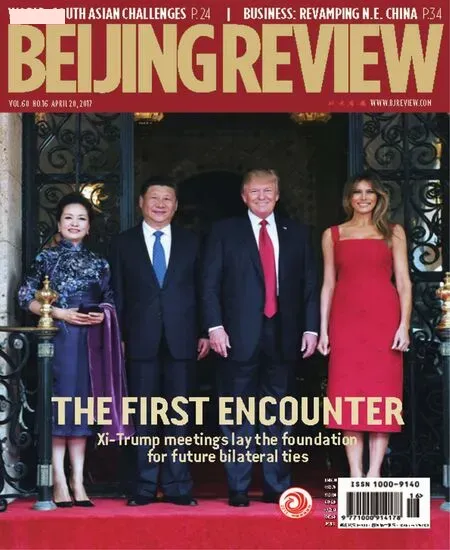China’s Economy Will Not Suffer Stagflation
China’s Economy Will Not Suffer Stagflation
Though total demand has not yet recovered substantially and the monetary policy maintains neutral, we should not conclude that the Chinese economy is in stagflation. It is very unlikely that the Chinese economy will suffer stagf l ation this year.
Since the consumer price index (CPI) rose above 2 percent, there were views that the Chinese economy will enter stagflation. In January, the CPI and producer price index (PPI) both rose much faster than in December 2016, fuelling stagflation views. However, in February, CPI declined 0.2 percent over the previous month but rose by 0.8 percent over a year ago, which was much lower than market expectations. PPI rose by 0.6 percent over the previous month and 7.8 percent over a year ago. Total demand has not yet recovered signif i cantly and the monetary policy remains neutral.
In economics, an economy is mired in stagf l ation when it meets the three following criteria: The economy stops growing or suffers recession; the inf l ation rate is above 10 percent or higher than GDP growth; and the unemployment rate is high. Going by these yardsticks, the slower economic growth and slight price hike in China do not mean typical stagf l ation.
First, the trend of economic growth. This year, without the occurrence of trade wars between China and the United States or other “black swan” events, it is widely expected that China’s exports will improve slightly; fixed assets investment will remain steady, driven by robust infrastructure investment; and consumption will also remain stable. While GDP growth slows down, China’s economic structure has improved, indicating the quality of economic growth has been upgraded. In the future, China will gain more growth momentum as the supply-side structural reform continues.
Second, the price trend. The year-onyear growth of CPI is likely to continue till the middle of this year, but in the second half of the year, it is expected to drop. So the pressure of inflation will not be significant the whole year.
Last, the employment. In China, the registered unemployment rate in urban areas has stayed around 4 percent for many years. In the last three or four years, over 13 million jobs were created in cities every year. The shortage of migrant workers and rising labor costs also indicate that the major problem in the future is not unemployment but whether there is enough labor.

A staff member sorts out fruit at a supermarket in Hengshui, north China’s Hebei Province, on March 8
However, if China fails to address risks pertaining to inf l ation, asset price hikes and the yuan’s depreciation, the difficulties for the macroeconomic policy will be intensif i ed and the risk of stagflation still exists. How should the country address the risk?
First, China should adopt a neutral monetary policy and control the money supply and bank loans to curtail asset price bubbles and inf l ation risks.
Second, it should significantly alleviate the tax burden on individuals and corporations. The government has been endeavoring to reduce taxes and administrative fees but the tax burden is still quite high. So it must take larger strides in cutting taxes and fees. In the short term, tax reduction will reduce government revenue, but in the medium and long term, this will improve business vitality and expand tax bases, fueling sustainable growth of fi scal revenue.
Third, China should unswervingly cut excessive production capacity. Without eradicating excessive capacity and shutting down poor-performing “zombie” enterprises, the economic stimulus policy will not work in the short term and resource allocation will continue to be distorted in the long term.
Lastly, the government should relax control to unleash more energy from the market. By opening up monopolized industries and loosening controls over production factors, the government can give more freedom to the market. China should also continue to encourage innovation and business startups and foster new growth momentum, so as to shake off the pressure of a sustained economic slowdown. ■
This is an edited excerpt of an article by Tang Jianwei, a senior macroeconomic analyst with the Financial Research Center of Bank of Communications, published in theEconomic Daily
Copyedited by Sudeshna Sarkar

